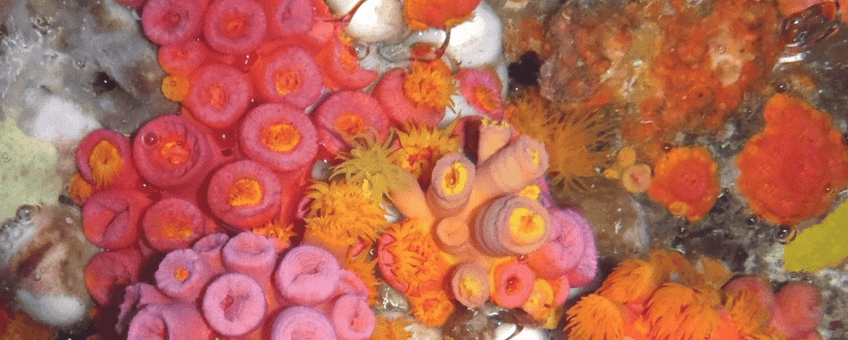
Danger of stowaway corals
Dutch Caribbean Nature Alliance (DCNA)Among the discoveries were two types of stoney corals (orange cup coral (Tubastraea coccinea) and T. tagusensis) and two soft corals (Chromonephthea spec. and an unidentified Nephtheidae spec.). This marked the first time T. tagusensis and the Chromonephthea genus were recorded in the Southern Caribbean. Additionally, a unique sea squirt (Perophora cf. regina) and a coral-associated snail (Petaloconchus spec.) were also spotted, both new to the region.
Why this matters
The introduction of non-native species to new environments can have profound effects. Primarily, they are spread by human activities, often unintentionally. People and the goods we use, travel around the world very quickly, and they often carry uninvited species with them. Invasive alien species entering a new area can have major ecological effects by decimating native flora or fauna. They can also cause significant economic losses and have an impact on human health.
In this case, the platform likely served as a transport for some species, demonstrating how human-made structures can unintentionally spread marine life across oceans. Monitoring such structures is crucial for tracking the presence and dispersal of non-native, potential invasive species.

Observed nonnative corals
The recorded invasive orange cup coral (Tubastraea coccinea) was already first noted in the 1930s in Curaçao. Nowadays, it is very common on natural and artificial substrates in shallow waters in Curaçao and its neighboring islands Aruba and Bonaire.
The other Tubastraea species present on the platform, Tubastraea tagusensis, originally from the Galapagos, was recorded for the first time in the Southern Caribbean. It has been found in Brazil since 2000 and in the Northern Gulf of Mexico since 2015. Off the coast of Brazil, this species has quickly overtaken a number of local ecosystems, including mussel beds and the Amazon River’s reef system, as well as rocky shores.
Also the two soft corals of the genus Chromonephthea, native to the Indo-Pacific, were new to the Southern Caribbean.
The challenge
This research in Curaçao underscores the importance of monitoring semi-submersible platforms and similar structures and biological fouling management. It shows the interconnectedness of our oceans and the need for international cooperation in managing marine biodiversity. It also highlights the importance of defouling of submersible platforms to prevent the colonization of reefs by non-native species, which potentially can disrupt local marine ecosystems once platforms become moored nearshore for long periods of time. As we continue to explore and utilize our oceans, balancing human exploration with the preservation of marine biodiversity becomes increasingly critical.

Text: DCNA
Images: T. Weber; J. Bruijninckx; F. Ermert, Dronepicr, CC-BY-2.0
